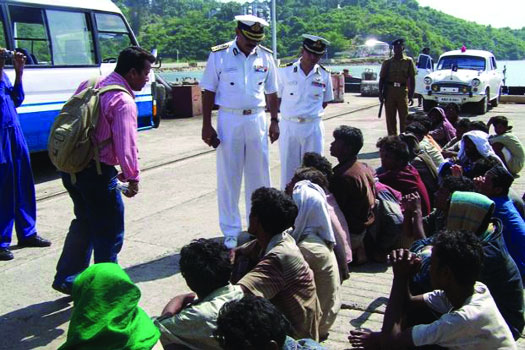A vicious cycle of failing environment and rising migration levels needs to be ended by implementing effective agricultural strategies as suggested by FAO
October 16 is observed as World Food Day in honour of the founding date of the Food and Agriculture Organisation (FAO) of the United Nations in 1945. The day is celebrated widely by many organisations concerned with food security, including the World Food Programme and the International Fund for Agricultural Development. The 2018 World Food Day celebrated recently brought to light issues of food security, agricultural production and nutrition challenges amid worsening environmental conditions and climate change. The FAO is engaged in finding solutions and strategies to overcome hurdles on the path to ensure a secure and nutritious food availability environment for the global population.
As a part of this mandate, the FAO published the latest 2018 State of Food and Agriculture (SOFA) report which focused on the role played by rural migration in both developing and developed countries in food security and nutrition for the migrants. In developed regions, for instance, such as North America and Europe, which have witnessed rural depopulation, outside labour in the form of international migrants constitutes the backbone of agricultural production. However, these external agricultural labourers often work in informal settlements and earn less. According to FAO, these conditions can be remedied by strengthening agricultural value chains to create livelihood opportunities beyond primary agriculture in rural areas.
The influx of rural population is putting unimaginable pressure on urban areas and its natural resources, leading to urban chaos and sprawl. However, the FAO report proposes measures, such as the creation of attractive livelihood opportunities in villages that can help stem rural migration. In Andhra Pradesh, the zero budget natural farming initiative which encourages polycropping and drought proofing in agriculture, has helped reduce migration to a great extent by helping farmers diversify income generation through variety of crops. This in turn has improved agricultural productivity and per capita household income, thereby ensuring better food security and nutrition. For generations, rural households have seen migration to urban areas as a time-tested risk management strategy for farming households to overcome income uncertainty and food insecurity. This needs to change.
Supplementing farmer’s non-agricultural income is one way to create incentive for people to stay in rural areas. Creating opportunities in non-farm employment in rural areas can be an important element of the rural development strategy, especially in the Indian context. This is crucial since rural to urban migration has always been a matter of concern. As per the 2011 census report, for instance, India saw a rural to urban migration of nearly 90 million people and this has only risen over the years. This migrating populace is greeted with scarce resources and dismal nutrition and food security levels upon their arrival in the urban areas.
Often, environmental factors, like drought and water scarcity, spark migration like in the case of Anantapur district in Andhra Pradesh, where recurring water availability issues have led to frustrated population migrating towards Bangalore and Hyderabad cities. To counter this, the Government must focus on building trenches, earthen bunds and farm ponds under the watershed management programme. The Government also needs to undertake research studies that collect primary data on the impact of extreme weather events on the rate of migration. This can help build a direct relationship between migration and its triggering factors.
Gradual depopulation of rural areas is a concerning prospect as much overpopulation of the urban areas is. The abandoned terraced agricultural hills in many locations of Tehri and Garhwal in Uttarakhand are a sad example of the local population shifting to the cities in huge numbers. This exodus has led to, in some cases, entire villages being abandoned and overrun by nature and vegetation. Conditions are so difficult that it has now become a priority for the local MLA’s to embark on repopulating the villages and restore the lost commerce and agriculture in the hill villages. Clearly, these conditions cannot be allowed to play out in other rural parts of the country.
Rural to urban migration in search of better income, food security and nutrition is not an India specific issue. In fact, human migration is now considered as the most severe consequence of environmental change on population. In recent decades, people migrating on account of environmental degradation has considerably spiked. This phenomenon is likely to increase even more, given the projected continuation of both environmental and climate change. This vicious cycle of failing environment and rising migration levels needs to be broken by implementing effective agricultural strategies as suggested by FAO and other such measures that are India specific.
The diversity of India and the close relationships between environmental factors and political, economic, and social factors driving migration make it challenging to isolate ‘pure’ environment-induced migration. Environmental pressure supports out-migration, whereas in-migration can affect the landscape at the migrant’s destination due to over exploitation of local natural resources. Thus, in-migration can accelerate environmental degradation. These conditions make it extremely challenging for the Government to come to a robust policy and strategy to deal with deteriorating environment and consequent migration. But the challenge has to be met and overcome in the best interests of man and nature.
(The writer is an environmental journalist)


























